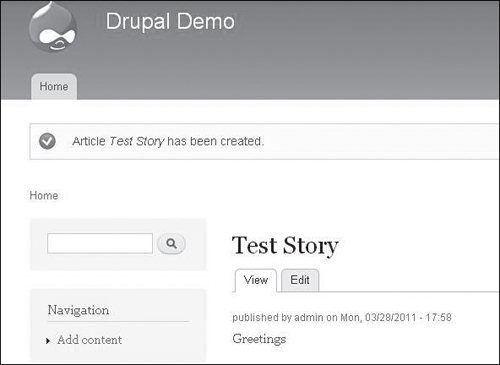Trying Drupal Out
When you’re ready to try a live Drupal demo out, there are a couple ways to get at it. You can try the link below I made, which should work, unless Drupal has changed anything: http://tinyurl.com/drupaldemo.
Or you can look for this section on the site and click All CMS Demos:

(If you have any trouble, try going to http://php.opensourcecms.com.)
Then you’ll need to look through the list of all the CMS systems, click on the numbers at the top, and scroll through, until you find Drupal.
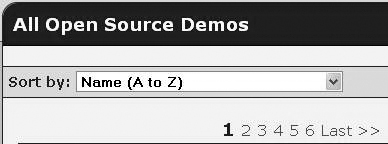
(There are a number of systems that have live demos, including Joomla, Wikimedia, and Moodle, which you might like to try.)
When you find Drupal, it may be a version 6 demo, or 7, or both. To try the demo, just click on the logo or the “Title” of the demo (for example, Drupal 7.0), as shown in Figure 3.9.
After you select the demo, it will have some basic information and a couple of very helpful links (see Figure 3.10).
When you’re ready to try things out, scroll down to the Drupal Demo section, and there will be a series of links. You’ll also want to write down the username and password, which will probably be “admin” and “demo123” (see Figure 3.11).
Figure 3.11. You are given links to live examples of Drupal and login info to try it.
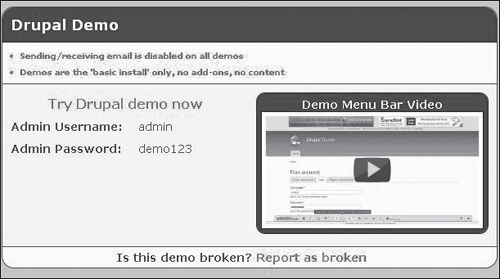
To access the demo, click “Try Drupal demo now.”
Drupal Demo
The “Drupal Demo” section will give you a read-out of when the demo will be deleted and reinstalled. Because it allows live access and for you to make changes, it automatically refreshes. Be aware that other people may be playing with the demo, so if it looks wacky, you can always come back later.
When you access the demo, you’ll probably see something like Figure 3.12. And if other people have been playing around, you might see some content on the page.
Figure 3.12. An example of what the demo may look like, depending on what other people have tried.

So just enter in the username/password and click the Log In button. Then, depending on which version of Drupal the demo is for, you’ll be logged in as an administrator, and you can add content or configure the site. If you like, try clicking on the “Add new content” link (see Figure 3.13).
Figure 3.13. What the screen may look like when you’re logged into the demo; there will be links, such as “Add new content,” which you can try.
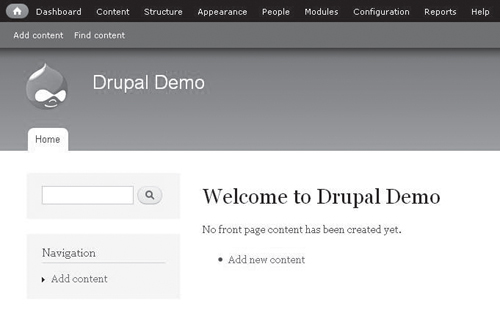
Then click the “Article” link (see Figure 3.14).
Enter in a title and type something in the Body section (see Figure 3.15).
Figure 3.15. Enter text in the Create Article window.
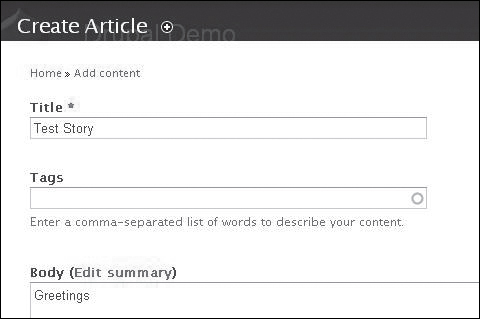
Then click the Save button at the bottom (see Figure 3.16).
Figure 3.16. Save button at the bottom of the Create Article window.
![]()
After you click Save, you’ll get a confirmation message. To get back Home, look for a “Home” link or click on whatever logo is displaying in the upper left-hand corner (see Figure 3.17).
And then theoretically you should see something like Figure 3.18.
Congratulations! You’ve used a CMS demo system to log in and add new content to the site.




